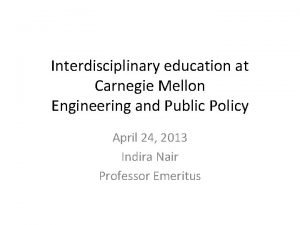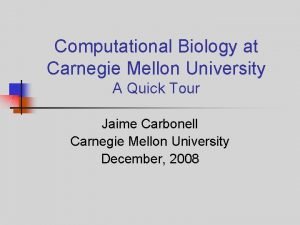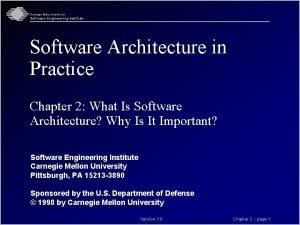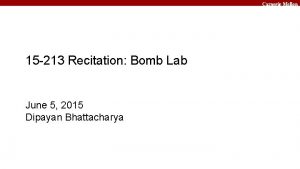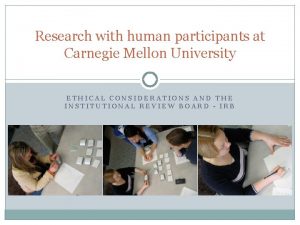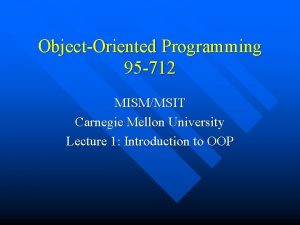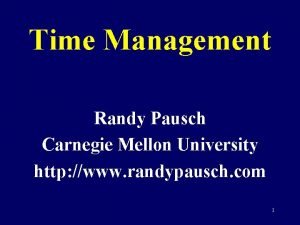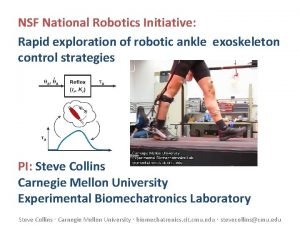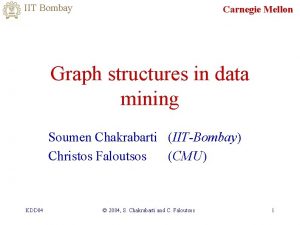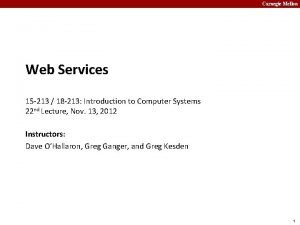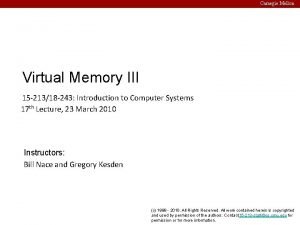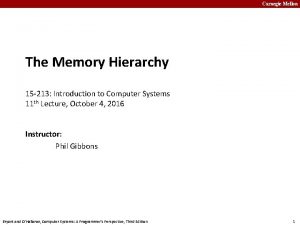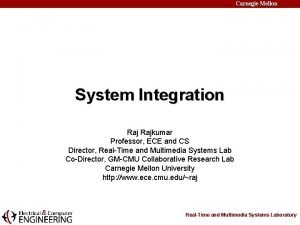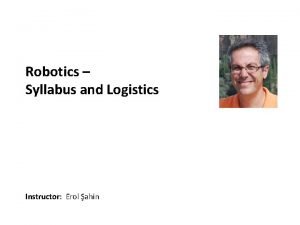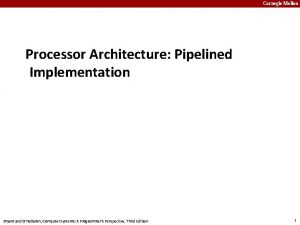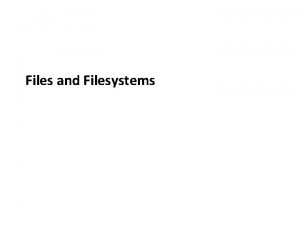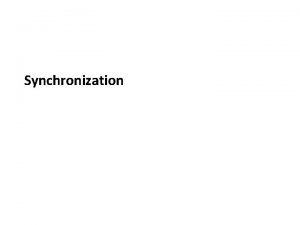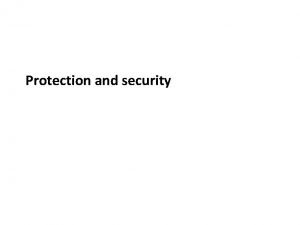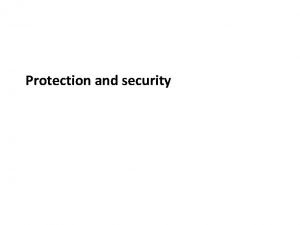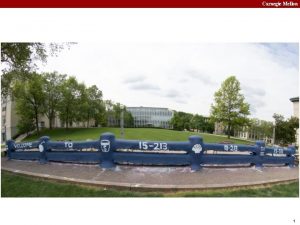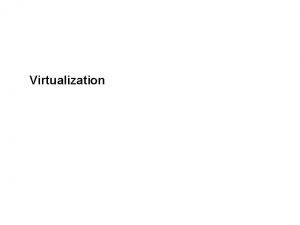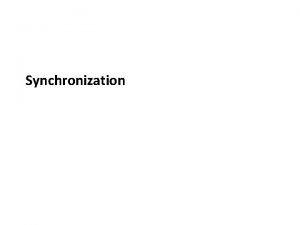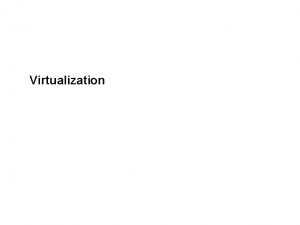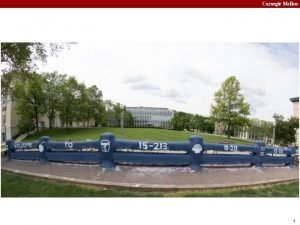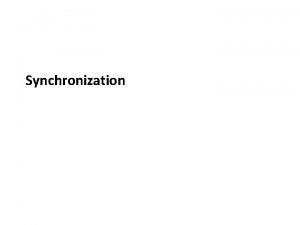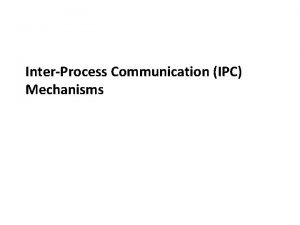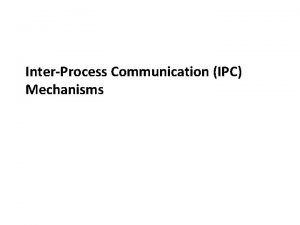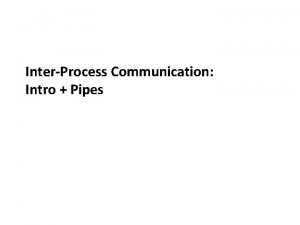Interdisciplinary education at Carnegie Mellon Engineering and Public

Interdisciplinary education at Carnegie Mellon Engineering and Public Policy April 24, 2013 Indira Nair Professor Emeritus

Engineering & Public Policy - Evolution • Started 1970 as program in Engineering & Public Affairs - undergraduate major and second major for engineering students • Became Department, EPP in 1974; start of graduate program • Situated in the engineering college (important) • Research-oriented Ph. D program, MS program in E&TIM, and double major undergrad program with other majors in engineering or CS

Curriculum and courses • Students (grad and undergrad) take engineering AND social science • Committees and advisors – multiple • EPP Project course (engineering) : = Physical-Technical Systems (PA) = Policy Analysis III (Soc & Dec Sciences) • Structure unstructured problems in unsolved question, faculty from 2 disciplines, graduate student manager

EPP = Engineers with a Difference • “…addresses important problems in technology and policy in which the technical details are of central importance. ” • Distinguished from STS programs • Important institutional features: ethos of university, culture of research collaboration, support from top – Dean through President • First in the U. S. ( MIT, Stanford most similar)

Institutional environment and Origin of Program • CMU philosophy of education and research – “real-world” problem-centered rather than discipline-centered • 1970, Professor Williams, head of Electrical Engineering – engineers also trained to deal with societal issues related to technology – translators and communicators • First co-Heads: profs in Mat Sci, Public Policy • 1974: Granger Morgan

Interdisciplinary, collaborative environment vital to success • CMU rooted in real world problems and educating students to act in the world, “make things” • Courage and impeccable credentials in leaders: Dean Toor (Ch. E), Co-heads, Robert Dunlap (Mat Scientist) and Gordon Lewis (Math. Anthropologist), Granger Morgan ( Physics, history, systems engineering) • Willing to defend vision, individual AND organization

Research focus • energy and environmental systems • information and communication technology policy • risk analysis and communication; and • technical innovation and R&D policy. • Across these : study issues in engineered systems and domestic security, issues in technology and organizations and issues in technology and economic development. • Develop new software tools for the support of policy analysis and research.

Institutional enabling • Innovation in organizational framework: joint appointments ( tenured), interdepartmental proposals, decentralized decision making. • Pioneering spirit: Herbert Simon, Allan Newell (AI), GSIA, SUPA innovation encouraged: ETC (Drama and CS), CNBC ( Biology, psychology, computer science, philosophy, statistics), Studio for Creative Inquiry ( Art, CS, architecture, design), Music engineering…

Challenges • From traditionalists : Can you be specialized in more than one field? • Employers (pre-1982) : does learning social science take away from engineering skills? • This turned around as engineering education was re-thought nationally ; students learned to communicate, EPP project reports valued • Repeated need to explain to the world— less and less.

Learning… • “meaning making”: To learn something means to acquire knowledge, skills, or dispositions that enable the learner to act, think, and feel in ways that are recognized as important by oneself or others. (Novak) • “The most important single factor influencing learning is what the learner already knows. Ascertain this and teach him accordingly” --(Ausubel, 1968, Educational Psychology: A Cognitive View, p. vi) • Mental models and use of concept mapping can help, in formative and summative assessment • Local ==> global in problem solving; but global => local in problem definition?

Disciplines… • Set of commitments, ways of investigating, • language and representation; • Choice of a class of and perspectives on: issues, knowledge and application • Point out to students when appropriate • Discipline: category designed for “focus”, “depth”, “cognitive economy”: specialization • Appropriate for learning? ? ?

Discipline – Defining and communicating its core • Making “habits” and foundations (limits too!) of knowledge explicit (in context) • Sort: Core from peripheral • Help students sort – know what they know – misconceptions? • “knowledge and methods distillation” – also useful in student’s exploration, and choice of discipline

Interdisciplinary T&L: Pedagogical Details • Empowerment— for lifelong learning – our first learning was integrative – “problems and decisions” • Connect with models they have already formed, to correct or confirm • Ask student to go through stages of generalization, prediction etc according to disciplinary norms • “Creating lifelong learners requires instruction to esnure that students have a generative understanding and an inclination tot progressively refine their idea” • “complexify” models in stages • Strategy instruction with topic instruction

Interdisciplinary T&L: Pedagogical Details (2) • Make “habits” and foundations (limits too!) of knowledge and disciplines explicit (in context) • Sort: Core from peripheral • Metacognition • Help students sort – know what they know – misconceptions? • “knowledge and methods distillation” – also useful in student’s exploration, and choice of discipline

Hourglass for Learning and Teaching 15

“Change” that lasts Disclosing New Worlds: Entrepreneurship, Democratic Action and the Cultivation of Solidarity – Fernando Flores and Hubert Dreyfus History – making ==> • Articulation • Cross-appropriation • Reconfiguration
- Slides: 16
